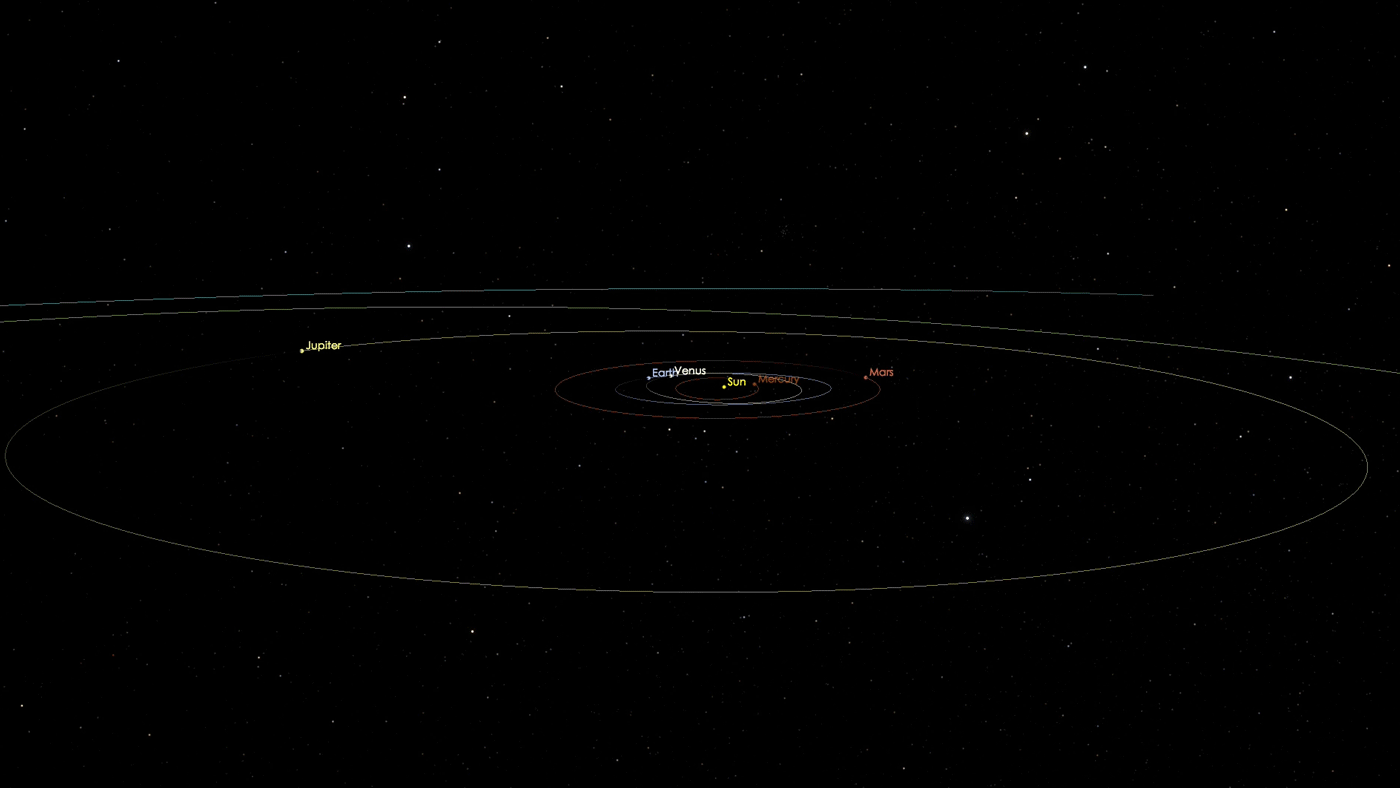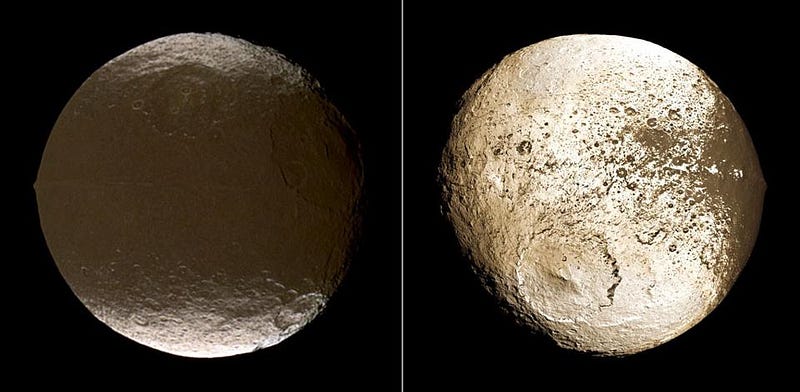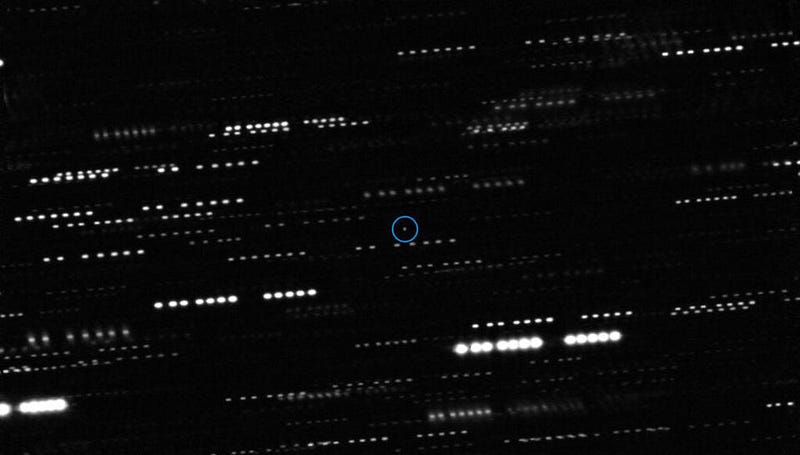New Theory Perfectly Explains ‘Oumuamua Naturally: From Exo-Pluto Collisions

Debris from Pluto-sized collisions, not aliens, are streaming through the galaxy.
In 2017, scientists discovered an object passing through our Solar System that was unlike anything else we had ever seen. For the first time, we discovered an object that originated from beyond our Solar System that was in the process of actively passing through our local neighborhood. At closest approach, it came inside even the orbit of Mercury, and was discovered a mere 23 million kilometers from Earth: closer than any other planet ever gets to our world. Named ‘Oumuamua — Hawaiian for “messenger from the distant past” — it has a number of properties that make it unlike any other comet or asteroid discovered so far.
While one astronomer has been publicly promoting the idea that instead of being a naturally occurring object, ‘Oumuamua might be an alien spacecraft of some sort, that type of wild speculation normally occurs only once the mundane explanations have been carefully considered and ruled out. That not only hasn’t occurred for ‘Oumuamua, as many hypotheses remain in play, but a new one presented at the 2021 Lunar and Planetary Science conference by Alan Jackson and Steve Desch could be the best explanation yet: ‘Oumuamua could be a new class of nitrogen ice fragments, arising from collisions occurring on Pluto-like worlds. Not only does this further disfavor the “aliens” hypothesis, but it makes a set of bold new predictions that we should be able to test in very short order.

When ‘Oumuamua came through our Solar System in 2017, it was only discovered because of the Pan-STARRS telescope: an automated survey that takes pictures of about 75% of the entire sky every one-to-two nights. Most objects in the sky are fixed: they neither change their position appreciably from night-to-night nor change in brightness. The ones that do change, however, are the ones that an automated sky survey like this is exquisite for finding, measuring, and characterizing.
This method helps reveal variable stars, transient phenomena like supernovae and tidal disruption events, and objects that are very close to us, as they will appear to move relative to the background of otherwise fixed stars. While tens of thousands of such objects have been discovered with Pan-STARRS, ‘Oumuamua was quickly recognized as being out of the ordinary. The first clue was perhaps the most important one: its orbit was far too eccentric to have originated in our Solar System. Even with a gravitational kick from a giant planet, the speed at which it was exiting the Solar System — 26 km/s — was far too great for it to have originated in our own backyard.
This was no comet or asteroid, but an interloper from beyond our Solar System, temporarily passing through our neighborhood from interstellar space.

‘Oumuamua, when it was discovered, was relatively close to Earth, but was also already on its way out of the Solar System. Each of its observed properties were consistent with other discovered objects, but this particular combination of characteristics is something new entirely. To the best indications of our measurements, we found that ‘Oumuamua was:
- rather on the small side, at just 100–300 meters wide,
- very red in color, reflecting light similarly to some of the Trojan asteroids found around Jupiter,
- devoid of a coma or tail, both of which we normally see with comets that come this close to the Sun,
- variable in brightness, where every 3.6 hours it brightened and dimmed by a factor of about 15,
- and it deviated from the orbit it should have followed from purely gravitational effects alone, as though there were a slight additional acceleration of about ~5 microns per second².
Each of these properties, on its own, wouldn’t be such a big deal, as there are many plausible explanations. The brightness variations, for example, could be explained by an elongated, tumbling, cigar-like object, or a flat, thin, tumbling, pancake-like object, or a spheroidal, multi-toned, spinning object, like Saturn’s half-darkened moon Iapetus.

But taken together, one thing is clear: this object is the first of a fundamentally new class of objects that are out there. Figuring out exactly what it is and how it fits into the broader population of what’s lurking in interstellar space is the key to understanding what’s going on. In theory, there should be lots of objects populating the space between the stars in our galaxy. Every time we form new stars in our galaxy, there are plenty of gravitational clumps that don’t quite grow to the size and mass required to create stars; that results in “failed” stellar systems: rogue planets, brown dwarfs, and larger numbers of even lower mass objects that should simply travel through the galaxy.
Additionally, the stars that do form will have protoplanetary discs, which form planetesimals that eventually grow into mature stellar systems of their own. During this process, however, a multitude of objects of various sizes form and get ejected, from trillions upon trillions of small rocky and icy bodies to a few thousand Pluto-sized worlds to even a few Earth-sized or larger objects. All told, even though our galaxy has somewhere around 400 billion stars in it, we might have somewhere closer to ~10²⁵ modest-sized (or larger) objects freely floating through the interstellar medium in our galaxy.

The question you want to ask, as a scientist searching for a mundane explanation for ‘Oumuamua, is what types of objects ought to exist in great numbers throughout the galaxy, and will any of them have properties that are consistent with what we saw when this interstellar interloper passed through our cosmic backyard?
Small analogues to asteroids have been suggested, but the issue there is that asteroids tend to outgas if they have volatile molecules on their surface, and the amount of outgassing required to produce the accelerations we saw are right at the limits of what our instruments should have been able to observe, and yet we saw no evidence for outgassing.
In fact, the gas problem is very significant: we detected no dust, no carbon monoxide, no water, and no carbon dioxide, which are all found abundantly for both asteroids and comets in our Solar System. If ‘Oumuamua is a body like the ones we find in our Solar System, our direct observations suggest that it’s extremely depleted, or low in volatiles.
And yet, volatiles are exactly what’s required to create outgassing, which is the primary culprit in non-gravitational accelerations of this magnitude. Basically, we saw large accelerations that indicate outgassing, but found no outgassing material itself, and that’s the largest mystery we need to solve concerning this object.

Last year, an interesting proposal was put forward: perhaps ‘Oumuamua wasn’t rich in dust, carbon monoxide, water, or carbon dioxide, but a different volatile molecule, like hydrogen gas. If molecular hydrogen covered merely 6% of the surface of ‘Oumuamua, scientists Darryl Seligman and Greg Laughlin calculated, the sublimation of those ices once ‘Oumuamua entered our Solar System could have caused that extra acceleration, all while avoiding detection by even our best instruments of the day.
That idea, however, runs into a particular problem: hydrogen ice sublimates away very quickly, even in interstellar space. By the time even 100 million years goes by — approximately the amount of time it takes naturally occurring objects to hop from one star to another nearby star — an object many times the size of ‘Oumuamua would have evaporated entirely.
The particular idea of hydrogen ice seems unlikely for this reason, but considering that possibility brought up an interesting alternative: perhaps there are other abundant molecules out there that could appear abundantly on the surface of naturally occurring objects, and perhaps their sublimation could explain both the non-gravitational acceleration of ‘Oumuamua while also remaining consistent with the lack of volatiles seen.

One interesting candidate that hasn’t been considered until this new work is the possibility of molecular nitrogen (N2) ice. Nitrogen ice is seen abundantly on large outer Solar System objects, including Pluto and Triton, the two largest known bodies that originated in our Solar System’s Kuiper Belt. (Yes, Triton, the largest moon of Neptune, is a captured Kuiper Belt object that is significantly larger and more massive than Pluto.)
These nitrogen ices cover large portions of the surfaces of the largest Kuiper Belt objects, and reflect about ⅔ of the Sun’s light, while absorbing the other third. Nitrogen ice on both Pluto and Triton is several kilometers thick today, but that’s the nitrogen ice that remains after orbiting the Sun for more than 4 billion years. It’s theorized that, early on in the history of the Solar System, those nitrogen ice layers might have been tens of kilometers thick instead.
In addition, our Solar System should have had a much larger, thicker, more massive Kuiper Belt early on, prior to the outward migration of our outermost planets, including Neptune. In the early stages of our Solar System, there may have been hundreds or even thousands of large objects comparable in size to Pluto, compared to just a handful today.

But this is where things get interesting. When a large planet like Neptune comes close to a belt of lower-mass objects, the gravitational force begins to scatter those objects. Some will collide with one another; some will get hurled into the Sun; some will get kicked out of the Solar System entirely. While the majority of the mass will remain on these large worlds, there will be large populations of very small objects — just tens or hundreds of meters across — arising from the collisions that occur.
In particular, the outer layers of these Pluto-like worlds, consisting mostly of water and/or nitrogen ices, will have large chunks ejected from them and kicked out into space during this process. What’s remarkable about this hypothesis is that analyzing it predicts the following:
- for a solar system like ours, a total of about ~10¹⁵ (one quadrillion) icy fragments of around ~100 meters in size will be produced,
- about ⅔ of the mass of those fragments will be in the form of water-ice, while the other ⅓ will be nitrogen ice,
- and the majority of small-sized objects — below ~1 kilometer in size — will be dominated by these icy fragments, rather than ejected comet-like or asteroid-like objects.

Now, you have to realize that the number one job any scientist has, when proposing any new idea, is to scrutinize it as rigorously as possible. We don’t simply have ideas and try to find the evidence that supports them; we do everything we can to try and poke holes in the idea, and to consider all of the physical constraints and restrictions that nature places on whatever idea we’ve concocted. In particular, we have to make sure that even when all of the restrictions we mentioned earlier still apply, the idea remains valid.
Would a nitrogen ice fragment of this size live long enough? As they travel through the interstellar medium, they will erode, but will survive for at least 500 million years, on average, with larger fragments lasting longer; this is acceptable.
Could a fragment like this be moving at the relatively slow speeds we saw: 26 km/s? It appears so; stellar systems start out with speeds of 5-to-10 km/s relative to us, and gravitational interactions with other stars increase that to ~20–50 km/s over billions of years.
How abundant would we predict nitrogen ice fragments are based on this analysis? This one is answered directly in the conference proceedings, “if other stellar systems have a similar ejecta profile to the Solar system we expect about 4% of bodies in the ISM to be N2 ice fragments, making ‘Oumuamua a mildly unusual body, but not exceptional.”
And would there be a signature of this in our own Solar System? Yes; if these nitrogen ice fragments are created from early collisions, we anticipate that approximately ~0.1% of all Oort cloud objects, presently beyond the limits of our observing capabilities, will be composed of N2 ice.

In science, it’s of paramount importance to make your predictions as concrete as possible when you’re coming up with a hypothetical explanation for what could cause an unusual observed phenomenon. ‘Oumuamua is definitely in a class by itself right now, but knowing what to anticipate can help us as we look to characterize this new class of objects: the bodies that populate the interstellar medium.
There’s a compelling case to be made that collisions between large objects in the Kuiper Belts of other stellar systems will kick up enormous quantities of ice fragments: largely made of water and nitrogen ices. Those fragments, along with many other objects, get ejected into the interstellar medium, where they travel through the galaxy indefinitely, until they evaporate entirely or happen to strike another object.
Careful analysis yields a prediction that about 4% of all such objects in the interstellar medium will be nitrogen ice fragments. With the Large Synoptic Survey Telescope at the Vera Rubin Observatory coming online within the next few months, it might not be long before the mystery of ‘Oumuamua and other interstellar interlopers is finally solved. When that day comes, remember the importance of ice fragments and early collisions on exo-Plutos!
Starts With A Bang is written by Ethan Siegel, Ph.D., author of Beyond The Galaxy, and Treknology: The Science of Star Trek from Tricorders to Warp Drive.





